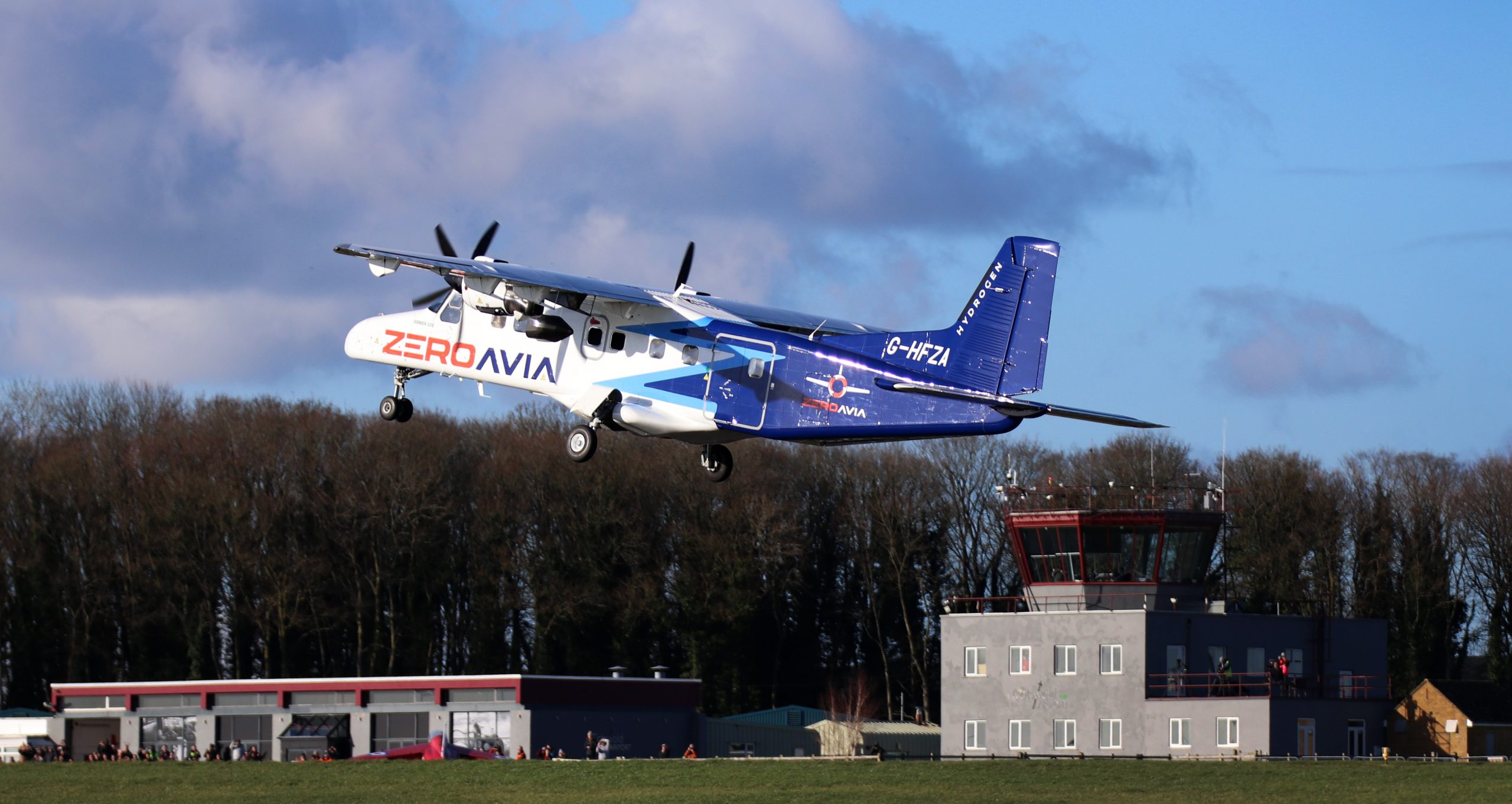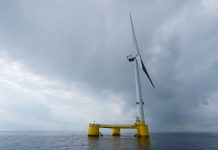Cotswolds-based carbon-free aviation pioneers ZeroAvia were today hailing a maiden zero- emissions flight by the world’s biggest-yet electrically powered plane.
A 19-seater Dornier 228 twin turboprop – pictured on take-off – flew for ten minutes above the firm’s Kemble airbase yesterday, half-powered by an electric turbine, running on green hydrogen, electrolysed from water.
The full-size prototype engine, fitted to the plane’s left wing, demonstrates ZeroAvia’s rapid success in upgrading their hydrogen-electric engines from a four-seater to the 19-seater Dornier, all in as little as 14 months.
Guilt-free flying by 2025?
In yesterday’s test the hydrogen-electric powertrain comprised two fuel cell stacks, with lithium-ion battery packs providing support during take-off and added oomph for safe testing. All systems performed as expected during a single airborne circuit of the field.
The prototype carries hydrogen tanks and the fuel cells in its cabin. In a commercial configuration, that kit will be mounted externally, with passenger seats restored.
ZeroAvia’s founder believes yesterday’s maiden flight opens the skies as early as 2025 to commercial electric aviation powered solely by hydrogen, with the firm’s engine technology scaled up to larger airframes.
“This is a major moment, not just for ZeroAvia, but for the aviation industry as a whole”, said the company’s boss Val Miftakhov.
“It shows that true zero-emission commercial flight is only a few years away. The first flight of our 19-seat aircraft shows just how scalable our technology is and highlights the rapid progress of zero-emission propulsion”.
ZeroAvia’s next step will be submissions this year towards full commercial certification by the Civil Aviation Authority of its hydrogen-based engine.
By mid-decade, ZeroAvia’s upscaling of its no-emissions powertrains, potentially rated between 2 and 5 MW – or 2,600 to 6,700 horsepower, in aviation-speak – promises to lift the wings of 90-seater aircraft. That’s the size of mid-range conventional passenger carriers, plying Europe’s medium-haul routes.
The landmark flight forms part of the HyFlyer II project, a major R&D programme backed by the government’s flagship ATI programme. This targets development of a 600kW powertrain to support 9- to 19-seat aircraft worldwide with zero-emission flight.
Kemble, not Kittyhawk
Since late 2019 the government’s Jet Zero Council has convened technologists & airlines including BA’s and Vueling’s parent IAG, EasyJet and LoganAir in quest of low-carbon flying. Among carriers, EasyJet has been working since 2017 with US startup Wright Electric & French engine builder Safran to phase out conventional jet-fuelling.
Energy & business secretary Grant Shapps felt some uplift yesterday, praising Britain’s world lead in green aviation.
“ZeroAvia’s flight is a hugely exciting vision of the future – guilt-free flying and a big step forward for zero-emission air travel”, opined the minister. “It also demonstrates how government funding for projects like these is translating into Net Zero growth”.
ZeroAvia already boasts 1,500 engines on pre-order, including from American Airlines, partnerships with 7 aircraft manufacturers and infrastructure explorations with airports including Rotterdam, Edmonton International and AGS Airports, operators of British fields from Southampton to Glasgow.




